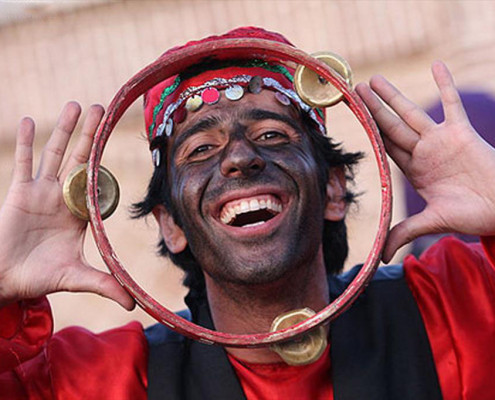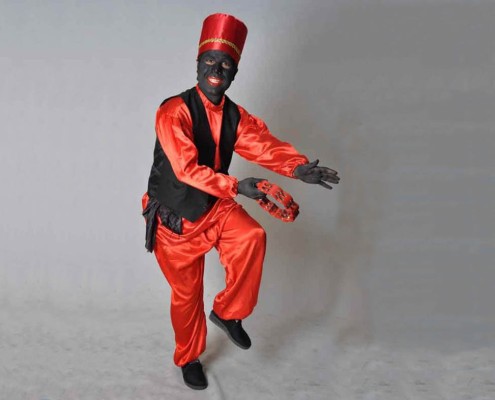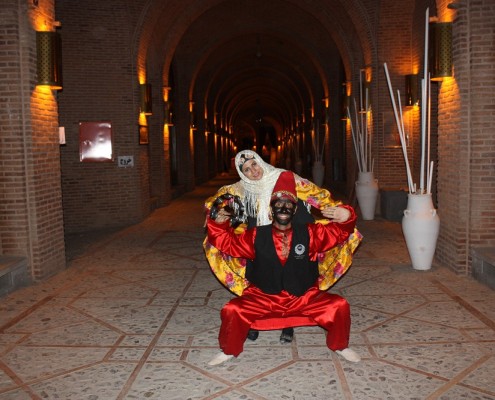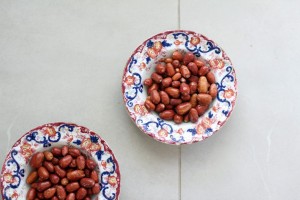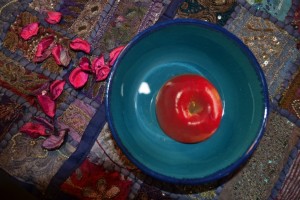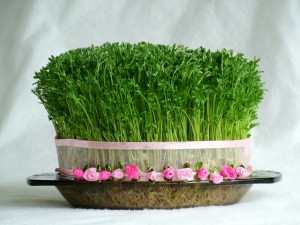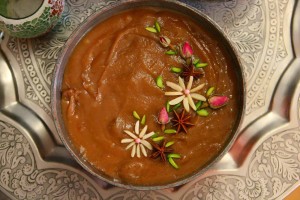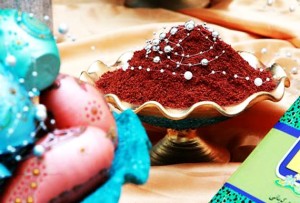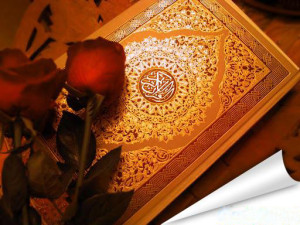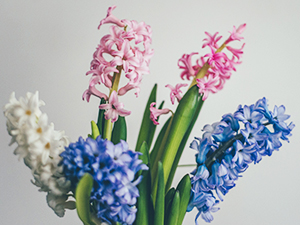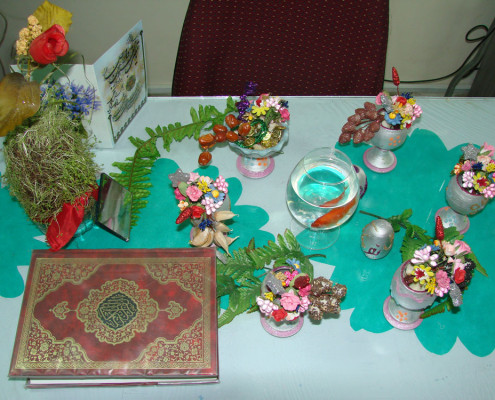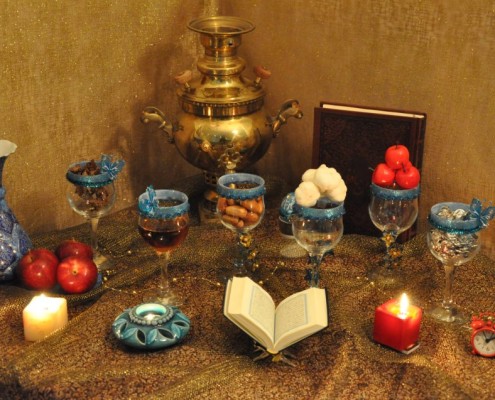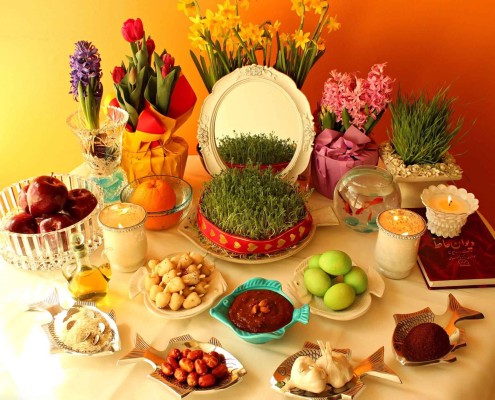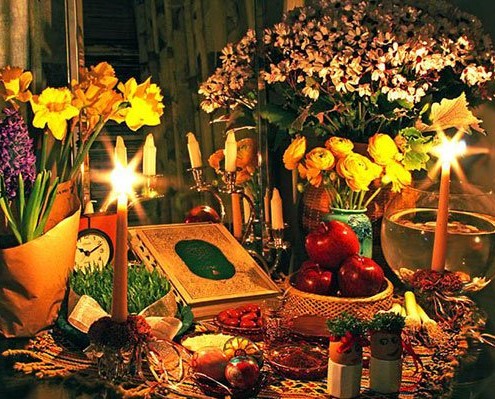Nowruz, Persian New Year
Happy Nowruz! The beautiful and magical spring is here with its lovely tulips, hyacinths, narcissi, and sweetly fragranced jasmines to remind us again that nature renovates itself every spring.
The soft spring wind and the Persian Santa Clause (Haji Firouz) on the streets are the envoys of Nowruz. Since ancient times Iranians celebrated their New Year on the very moment the sun completes its full turn around the sun and that is the first day of spring season.
Haji Firouz is the symbol of happiness for people. He is on the streets before and during Nowruz with his face and hands painted in black, wearing red clothes and a hat. Haji Firouz has a tambourine that plays on it and sings happy traditional songs to bring more joy to Nowruz celebration.
As a tradition for Nowruz, every household does a thorough cleaning of their homes inside out and empties their home of any old and unused material. People buy new clothes and get new haircuts to have a very fresh start for the New Year. The special food for Nowruz is fried fish with Sabzi Polo (rice with chopped herbs). It is cooked either for New Year’s Eve dinner or for lunch on New Year’s Day.
Iranians have a Sofreh for their weddings and celebrations and there is a Haft Seen (seven s’s) Sofreh for Nowruz as well. All the items on the table are chosen because they bring good luck and prosperity to all the family members.
Senjed (fruit of the oleaster tree) symbolizes love. It is one of the main elements of Haft Seen. It refers to people’s love for one another. Some say that it represents fertility and wisdom. Therefore, for a year full of love, insight, and blossoming, Senjed is a must element in Nowruz Haft Seen.
Sib (apple) is the symbol of health and beauty. Apple is a special element in Haft Seen. Apples were valued food for Ancient gods in Greek and Roman mythology; they were used as trophies for good deeds. The apple in Haft Seen is meant for the family’s well-being in the upcoming year, hoping they will be safe from any harm and disease.
Sabzeh (sprouted wheat grass) is a symbol of birth and development. One element that certainly gives life and beauty to the Haft Seen is Sabzeh. It represents rebirth and growth, a new life. Iranians usually grow them a few days before Nowruz day for a joyful year to come. As a tradition, they keep it till the thirteenth day of Nowruz and tight some leaves to make their wishes come true this year. Then, they leave it by the waterside or let it flow in running water, hoping that their wishes will be granted soon.
Samanu (a sweat pudding made from wheat) symbolizes wealth and fertility. It also represents power and strength. This sweet pudding is specially made for Nowruz. For a year full of sweet moments, usually, after the new year is announced, family members eat a full spoon of Samanu or instead have chocolate or pastries.
Seer (garlic) symbolizes medicine or health. From ancient times, garlic has always represented a medicine that draws away evil or beasts. Aside from that, garlic is known for being highly beneficial for body health, and how it can keep our bodies immune to diseases and viruses. So, for a healthy body and to stay away from diseases in the upcoming year, garlic should definitely be on the table.
Serkeh (vinegar) symbolizes patience and wisdom gained by age. A vinegar can stay healthy for a very long time because of the compounds that it contains! The fact that it was chosen as a member of the Haft Seen table in ancient Iran was primarily due to this feature. It also represents disinfection and immortality. For a life with no harsh troubles, vinegar plays an important role in Nowruz Haft Seen.
Somaq (a Persian berry) symbolizes the color of sunrise and new beginnings. Some say that it represents tolerance and endurance. Sumac’s presence on the Haft Sin table signifies our need for patience and endurance in the face of hardships in the coming year. Some people put coins (Sekeh) instead of Sumac for future prosperity and higher income.
Quran, the holly book, is on the table accompanied by a copy of Rumi’s, Hafez, or Shahnameh (The Epic of Persian Kings). As a tradition, the oldest member of the family puts some money between the pages of the Quran, and during the holidays, when visitors come to celebrate the new year, the host gives some money to the youngest visitor. That’s the time most visitors look forward to during their visits.
Hyacinth flower, with its vibrant colors and sweet fragrance, is a cherished symbol of springtime. During this festive occasion, the hyacinth, also known as “Sombul” in Persian, is often used as a decorative plant and is placed on the traditional table setting. The hyacinth’s elegant beauty and intricate symbolism make it a beloved feature of this joyous occasion.
On the New Year, people visit their friends and families and get ready for guests to come over. The greeting is by kissing one another on the cheek in gratitude and saying “Noruz Mobarak!”
Noruz celebration lasts for 13 days and to escape the unluckiness of the 13th day, everyone goes out in a park or garden to have a picnic. On this day like the April Fools’ Day, people play practical jokes and spread hoaxes.
Happy Now Ruz the celebration of Life.

